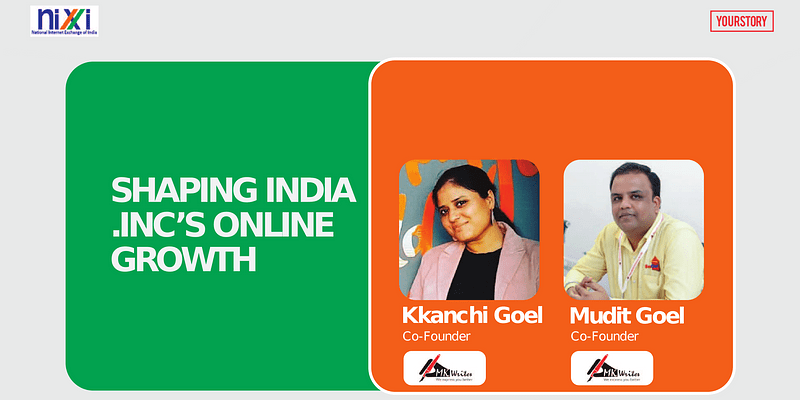The Code Halos: Three steps to navigate for success in the digital world
Netflix beating Blockbuster, Google beating Yahoo, Facebook beating MySpace, Amazon beating Borders, Apple beating Kodak, and the rise of companies like LinkedIn and Pandora are the result of mastery of a new set of rules.

Authors Malcolm Frank, Paul Roehrig and Ben Pring describe the converged digital and real world ecosystem of the 21st century as Code Halos. To succeed, business leaders need to understand and master the Crossroads Model, described by the authors in their 250-page book, Code Halos: How the Digital Lives of People, Things, and Organisations are Changing the Rules of Business. I have summarised the key takeways of the book in the sections below, which can serve as a navigation guideline for a digital strategy.
I. Map out the Code Halo opportunity
The online economy (launched with the commercialisation of the Internet in 1995) will surpass the industrial economy in scale and scope by 2025, according to the Santa Fe Institute. By 2020, more than 75 billion devices will be connected to the Web. By 2020, corporations will be managing more than 50 times the data currently managed. We have moved through eras of 100,000 computers (mainframes), millions of computers (minicomputers), 100 million computers (client-server era), billion computers (online PCs and laptops) and now 10 billion computers (devices including smartphones).
SMAC technologies (social, mobile, analytics, cloud) are now used by so many online users in daily activities that older kinds of business transactions seem boring, irritating, inadequate and even offensive, eg. an ATM that asks for your preferred language even though your bank has so much information about you.
A Code Halo is the data that accumulates around people, devices and organisations. It is continually updated by humans, communication devices and sensors, and is robust, rich and complex. It has multiplier effects that allow companies to understand customers and their behaviours (‘rear view mirror’), extrapolate and anticipate their actions (‘windshield’ orientation), and even deliver ‘magic moments’ of service delight. These appear at the level of individual users, industries and even entire societies.
Related read: From idea to implementation, Gartner Hype Cycle tracks evolution of technology innovation
Code Halos are of five types: customer, product, employee, partner and enterprise. Core elements of a Code Halo solution are amplifier, application interface, algorithm, data and business model. For example, this could include Internet of Things (IoT), industrial machines and even daily use consumer items such as toothbrushes. These are connected via a ‘skinterface’ designed in an intuitive manner, and generate data which can be interpreted via algorithms to create personalised and customised insights.
Successful players in this space include not just the usual digital suspects but also innovative incumbents such as GE (‘Brilliant Machines,’ ‘Industrial Internet’), Disney (‘Magic Band’), UPS (‘technology company with trucks’) and Allstate (mobile devices and analytics for auto insurance). Even digital players such as Nokia and Motorola, and products such as Microsoft Zune, have been overshadowed by other digital players with better Code Halos.
Netflix used the ‘molecular understanding’ of Big Data to outdo its competitors and produce award-winning TV programs such as House of Cards. Propeller Health uses sensors in asthma inhalers to track medication usage and issue alerts to healthcare providers. Nest thermostats track household energy patterns (its designer Tony Fadell was also the designer of the iPod). Amazon’s Betterizer system lets users recommend how to provide better service based on their preferences.
“The enterprise Code Halo will be the dominant source of market truth for today’s organisation,” the authors predict. Business leaders should mobile-enable existing processes, transform existing processes and create new business models. “If your device costs more than $50 and you can’t eat it, put a Code Halo around it,” they advise. Sectors and communities ripe for Code Halos are knowledge-based organisations, daily use products, digital natives and globally-distributed businesses.
II. Adopt the four principles of the Code Halo strategy
The four principles for success in the Code Halo economy are: (i) deliver beautiful products and experiences (ii) don’t be Evil 2.0 (iii) manage your career based on code (iv) make IT your Code Halo heroes.
Products from now on should be physically beautiful as well as virtually beautiful (in terms of information interaction) and deliver powerful insights through correlations and customisation. The entire experience should be beautiful, eg. virtualised to remove barriers of location and uncover new connections.
While companies should gather as much consumer data as possible and collaborate with their partners, they should also be transparent, allow customers to delete their data, and comply with regulations. The opt-in ‘give-get’ relationship should be clearly spelled out and not buried in pages of legalese.
Companies should structure themselves as much on ‘wirearchy’ as hierarchy. Virtual work habits are as important as physical work practices. IT should be aligned in three horizons: core mature activities, emerging businesses and next-gen viable options. IT and business should start working together more closely, via new centres of excellence for example.
III. Implement the Crossroads Model
The five stages of the Crossroads Model are: ionisation (‘green shoot’ ideas, emerging technology), spark (Code Halo emerges by one company or in another industry), enrichment (new solutions are scaling commercially), Crossroads phase (markets and competitive positions start to flip), and post-Crossroads (rapid success, rapid failure).
Business leaders should nurture the will to innovate in their organisations, and encourage teams to rethink, rewire and reinvent business models. “Think like a venture capitalist and create a culture that accepts failure,” the authors advise. Failure should not be penalised but converted into learning opportunities.
Code Halo ideas should be mapped in areas like strategy, manufacturing, operations, financing and service. New ideas should be encouraged in the organisation, including from new employees. Pilot projects should be designed around areas where mass customisation is happening, and give-get initiatives for Code Halos should be prototyped.
Focus should be on improving customer connect and information flow before looking for profits. Once user experience has improved and rich data been gathered, the correct metrics can be designed and tweaked for defining value and capturing revenues. This calls for patience and openness, and needs change champions who understand market changes and can capitalise on it, the authors conclude.
In sum, this is a useful analysis of technology innovation flow (see also my review of the Gartner Hype Cycle model), which goes beyond the usual breathless excitement about digital convergence. The authors have expanded on the literature on innovation with a practical model which extends to a blended offline-online world, and provide actionable advice not just for startups but established incumbents.
About the authors:
Malcolm Frank is VP at Cognizant, and was named as one of the most influential people in finance in 2005 by 'Risk Management' magazine. Paul Roehrig is Global Managing Director of Cognizant's Center for the Future of Work, and earlier was principal analyst at Forrester Research. Ben Pring is director at the Center for the Future of Work.











